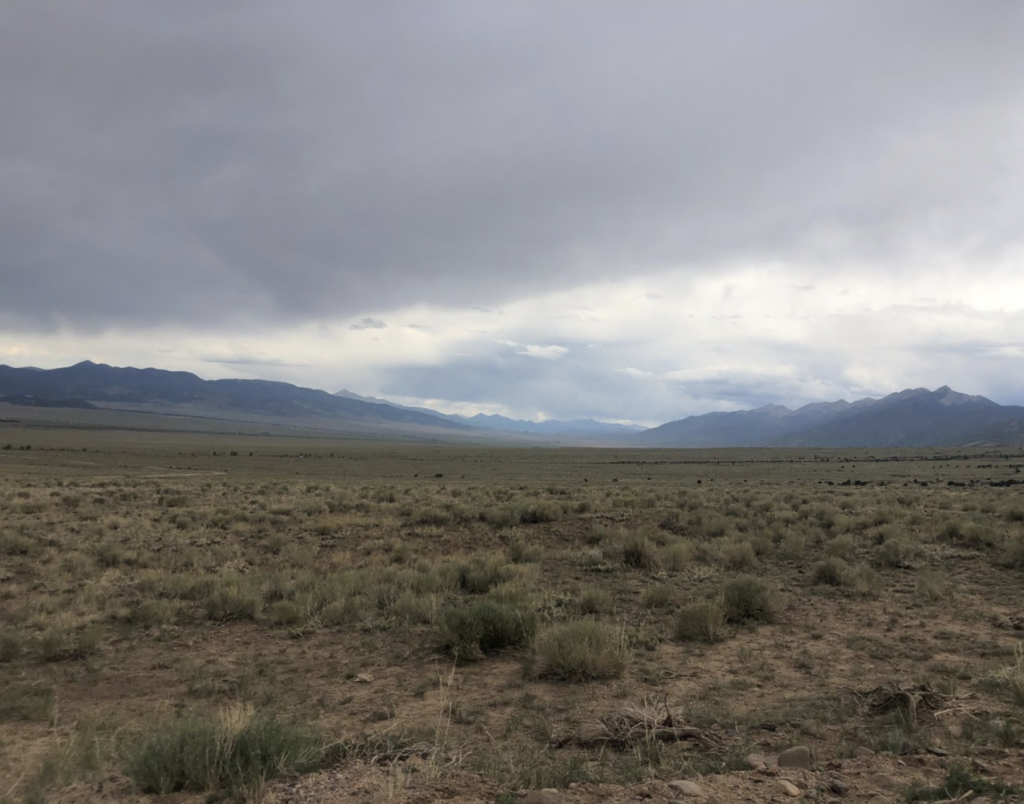Championing the ecological importance of cattle grazing doesn’t always land well in environmental groups. Pushback often quotes methane emissions, a warming climate, societal collapse and so on. Yet, across rural areas of the western United States, entire communities depend on cattle. Over one-third of the land area of the United States is rangeland, undeveloped land populated by native grasses, forbes, and shrubs that are often suitable for livestock and wildlife grazing. Most of this area lies in the western United States. These arid landscapes are ill-suited for human development or crop production. However, they can sustain and support intermittent cattle grazing. In rural areas with limited economic opportunities, cattle serve as an economic generator and a reliable source of income to communities that lack the security of stronger urban social safety nets.
Grasslands across present-day North America evolved in unison with herds of grazing ungulates (hoofed mammals such as deer, bison, and antelope), and grasses evolved under intermittent grazing pressure. Today, cattle are our most abundant proxy for grazers that once roamed across North America. When managed effectively, cattle can simulate a natural part of healthy, intact ecosystems. High-intensity, short-duration rotational grazing, wherein cattle are moved regularly and frequently, best imitate the behavior of native ungulates. When raised in this way, cattle can support native plant communities and contribute to healthier soil. I witnessed these impacts firsthand while raising cattle. The difference between fields that had been rotationally-grazed and those that had not was stark.

Overwhelmingly, I find that the cattle ranchers I meet care more about land than any other group of people. With an average herd size of only 44 head, ranchers base their livelihoods on their ability to keep ranching, on the ability of their grasses to keep growing, and on the ability of their soil to keep supporting life. This system is necessarily built upon sustainability, often with the intention to repeat the same cycle on the same piece of land for generations to come. I often hear cattle producers jokingly refer to themselves as “grass farmers,” explaining that their lives’ work is in using cattle to build healthier pastures. This work happens to grow healthy cattle and generate income at the same time.
The production of food, energy, material goods, and all that supports our everyday lives is inherently extractive. We underscore the environmental impacts of beef production, yet we don’t eat lettuce (shipped from Arizona to New Haven in cold, gray months) or meat-imitation products (produced with highly processed, monocultured crops) without an environmental toll. Considering the importance of resource-based economies such as ranching is challenging, in that the process forces a greater reckoning with the environmental extraction of our own lives. We all rely on resource-based economies, yet we don’t often recognize the realities of this work. It’s easier to pat oneself on the back for cutting out beef, than it is to grapple with the economic reality of rural communities that hold ideologies and worldviews that may be different from one’s own. It’s easier to celebrate purchasing an electric vehicle than it is to grapple with the injustices borne by communities nearby lithium mining sites.
It’s difficult to imagine a “just” transition away from cattle (analogous to an optimistic transition away from coal) as anything short of dismantling communities and ending ways of life that have persisted for generations. Rather than canceling the beef industry, we can recognize the value of responsible herd management and reward these practices. We can support transitions towards better on-ranch practices that increase the ecological benefits of open land and the economic benefits to rural communities. This year, I have been working with the Colorado Cattlemen’s Agricultural Land Trust (CCALT) to support the development of their Agricultural Resiliency Fund. The Agricultural Resiliency Fund will provide landowners with the resources to enhance conservation values on their properties and improve the agricultural viability of their operations. I am excited to contribute to this work, as CCALT is actively building a future wherein the ecological benefits of rangeland and cattle grazing are recognized and rewarded.
